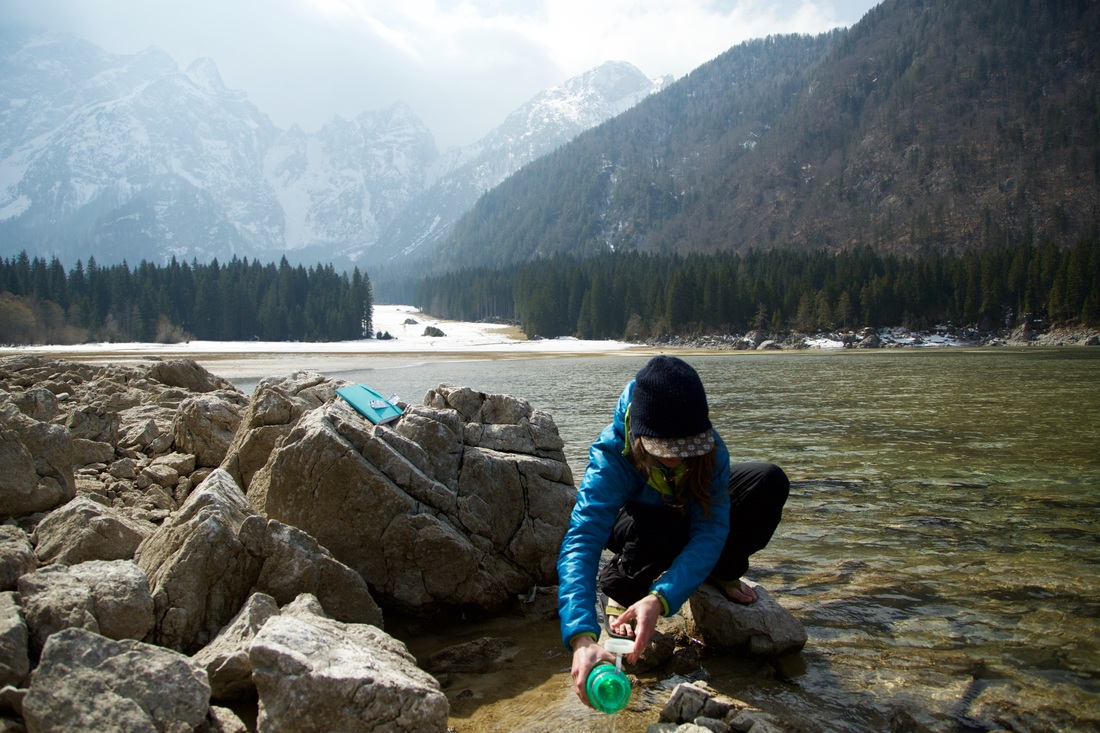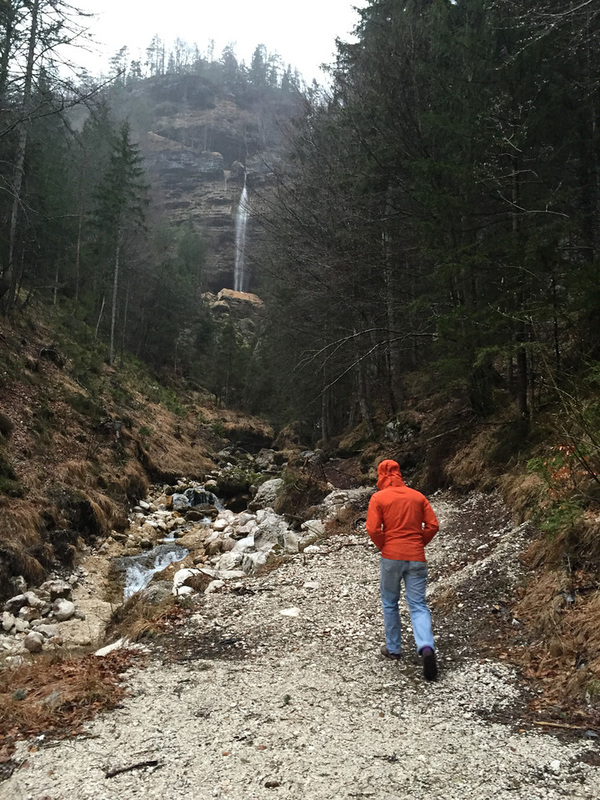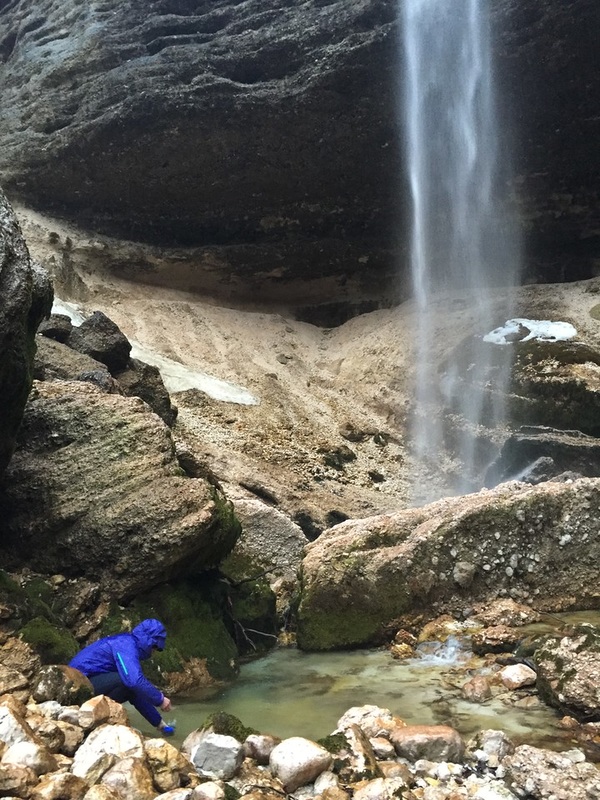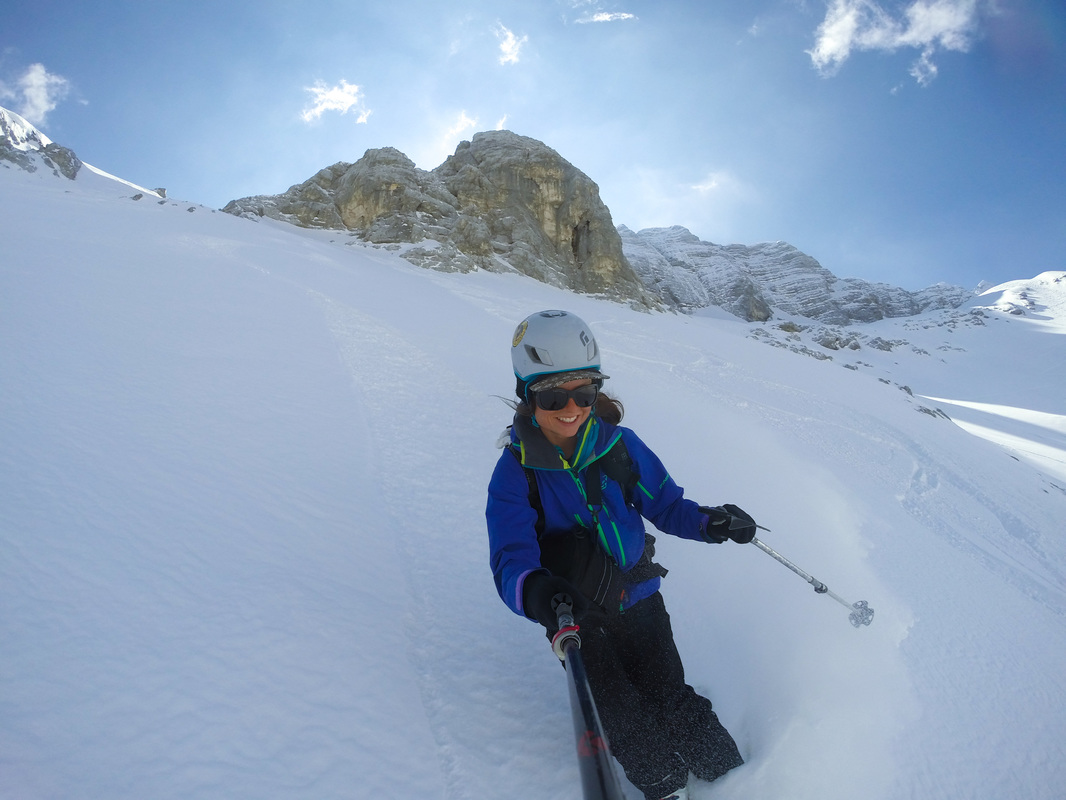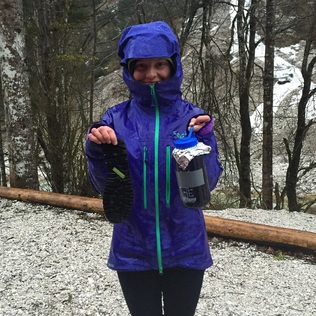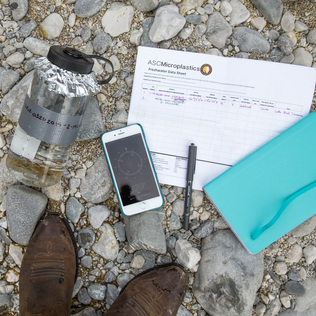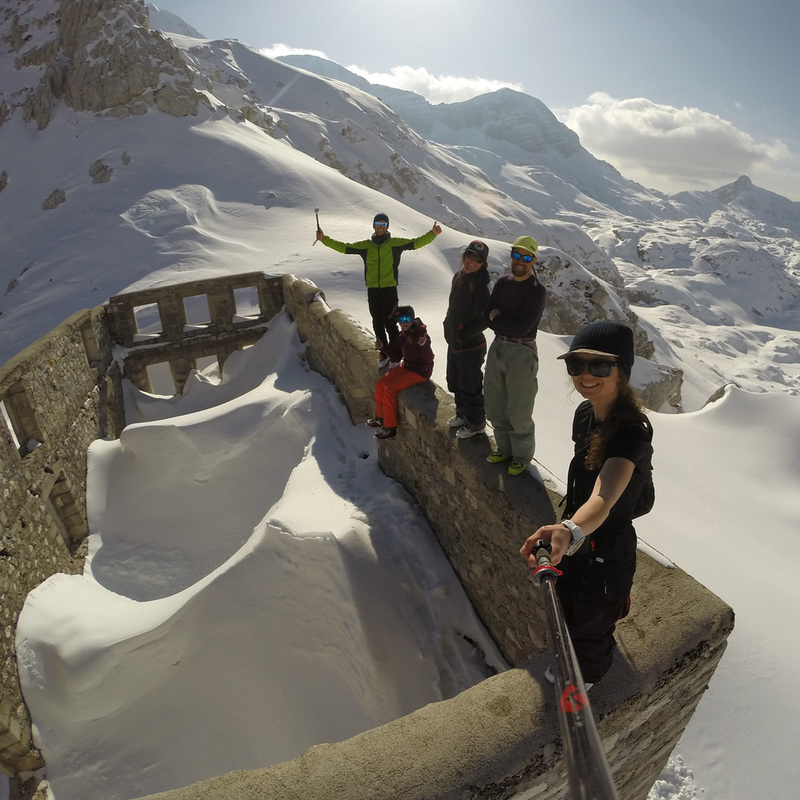ASC Microplastics Adventurer
As Mose drove, I could see a large stream running along the side of the road on the way to Ljubljana, the capitol of Slovenia.
“When you see a good spot, can we pull over and get another water sample from that stream?” I asked.
“Yeah, but I know a better place,” Mose said with a half smile. He turned off the highway and zipped through a maze of narrow streets in a small village.
I had spent the previous two weeks skiing in Slovenia and Italy with my friends Brigid Mander, Molly Baker and Liza Sarychevski. We met Mose, also a skier, along the way. When Adventurers and Scientists for Conservation told me about its new Freshwater Microplastics Project, I was thrilled to collect some of the first samples during our trip.
We passed quickly through the town and into the mountains. Gravity pulled me side to side in a sway as Mose drove up and up a winding forest road. Europeans like to drive fast.
The road became bumpy, and Mose dodged potholes and a fallen tree. After about 10 minutes, we came to a stop. It was pouring rain. I mean really pouring.
“How about this spot?” he asked, grinning again. “People say that this is the most beautiful waterfall in Slovenia.”
We hopped out of the van and began a short, steep climb to the base of the waterfall, me in cowgirl boots, Mose in Birkenstocks. As we approached the cascading stream, it dawned on me that someone would have to get soaked to catch falling water from or even near the cascade, but on second thought, we were already soaked.
|
I cautiously approached the pool at the base of the waterfall. Wet rocks and cowgirl boots are a dangerous combination. I went through the motions: rinse three times, fill, foil, lid, GPS coordinates, done.
When we turned back toward the car, and I saw an old shoe sole on the ground. “Are you missing your, ‘soul’?” Mose asked, joking. |
Volunteer for the ASC Microplastics Project |
As we slid back into the van, Mose looked at me and said with complete sincerity, “I hope there’s no plastic here.”To be honest, I was with a team collecting samples in Greenland last year, but wasn’t the one keeping track of everything and doing the sampling. This year, as the person looking for spots to sample and writing down all the information myself, I thought a lot about how water flows and what would be upstream and downstream of each sampling spot.
I found myself wondering, ‘how much plastic will be this water?’ and thinking strategically about where I took samples. I was curious to know if the samples from the mountains would have fewer microplastics than the samples from the cities and lakes. I hoped so. The remote places in Europe see a fair amount of human traffic, so I expected the water would have more plastic than where I live in Montana, or Alaska, or somewhere else really remote. I hoped I might be pleasantly surprised, and there would be almost no plastic in the water at all. Time would tell.
“Is this ridiculous?” I asked Mose and Brigid. “I really want to get a sample from the river.”
There is a river that runs through a manmade canal in the middle of the city center. Historic bridges, built as early as the 1300s span the canal, each with a name and ornate architectural décor. One of them even has dragons.
We walked across the first bridge, and I looked down. It would be impossible to get to the water. The canal walls were almost vertical, covered in slime, with a meter drop from the top of the concrete to the water. I didn’t have any string to lower the bottle off of a bridge. The odds seemed slim of collecting a sample there. We found a place to eat dinner.
After dinner, we ventured back out in the still pouring rain, water falling and dancing in the glow of the street lights. I spotted a ladder, and then a set of stairs going down toward the river.
I considered jumping the fence, but then tried the handle on a wrought iron gate and, to my surprise, it was open! I scampered down to the water and went through the motions again: rinse three times, fill, foil, lid, GPS, done. Feeling content, we walked back to our hotel in the pouring rain and prepared to depart Slovenia the next day.
I was curious to see the results of all of the samples we took in Slovenia and Italy, but I was especially curious to compare the water samples from the waterfall and from the river in downtown Ljubljana.
“Do you think that the waterfall we took a sample from flows into this river?” I asked Mose as he got back into his van to return home.
“Oh yes,” he replied “definitely.” And with that, Brigid and I said goodbye to our Italian friend, and our Slovenian adventure came to a close.
It turns out that all of our samples had two pieces of microplastic, except the first sample, which had five. That means the waterfall in the mountains had the same amount of microplastic as the river downstream in downtown Ljubljana. The sample that had five pieces of plastic came from a lake in the middle of a small town, with a trail around it, and hotels and restaurants operating along its shore.
Unfortunately, Mose’s hope was not true, and there were indeed microplastics in the fresh water of his mountainous home. It saddens me to share this news with him, but it is a good reminder of the far-reaching impact of humanity and the consequences of our choices as consumers and citizens of the world.
So, I dare you to try to decrease your impact and the impact of those around you, and to ask yourself, “What did I buy wrapped in plastic today?”

